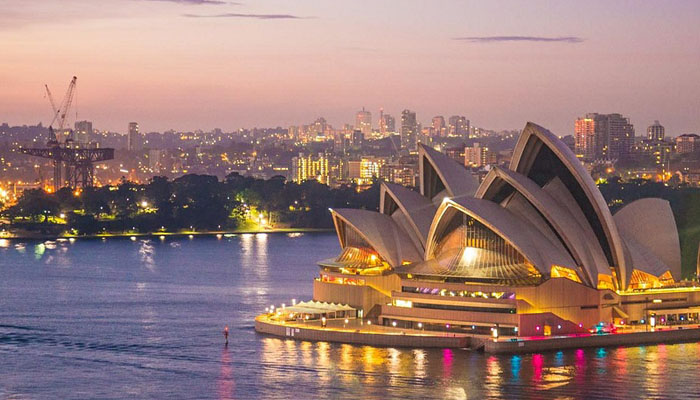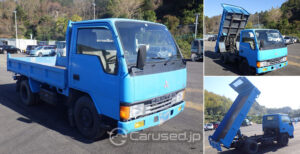For the first time since 2000, Australia’s Motor Vehicle Standards Act 1989 is going to be updated. It’s almost 20 years since then and many things have changed. So, the government is revising the legislation to keep up with the modern world. Needless to say, it will appropriately cater to contemporary vehicles available in the market.
For over four years, legislators have been planning and studying the revisions. As of this writing, they are now with the Australian Senate for consideration. It is expected that by the end of 2018, the law will be enacted. Of course, it will take approximately 12 months before the revised legislation will be across the country. So, the new laws will be used for importing cars by the end of 2019. However, you can always purchase a unit from a used cars online auction ahead of the date. This way, you can have your vehicle ready for shipment to Australia as soon as it becomes eligible for import.
What are the Changes in the Car Import Regulations We Can Expect for 2019
- The 25 Year Rule will continue, but the structure and operation are still to be decided. However, the rule is expected to work similarly to the current 1988 and older rule. According to the old rule, any car model—even those sold as new in Australia—can be imported into the country as long as they meet the required age and other conditions. One of the significant differences is that the new rule will focus more on genuine enthusiast vehicles and not on buses or trucks.
- For 2019 and 2020, standard passenger vehicles like Delica, Estima, and Elgrand will still be allowed for import. However, during the two-year transition period from January 1, 2021, they will no longer be eligible for import under the Specialist and Enthusiast Vehicle Scheme (SEVS).
- If you’re planning to buy an SZ Supra from a used cars online auction, you might want to reconsider importing it to Australia. You will no longer be allowed to import enthusiast models like it under the new SEVS’s performance criteria (power/weight ratio).
- Before a model must be released to the world market for 18 months before it can be eligible for addition to the SEVS list. With the new import regulations, that waiting period will be cut down to three months.
- Compliance will become more affordable, convenient, and consistent with the use of pre-approved Govt. Model Reports. The execution is yet to be determined. However, new tires, catalytic convertors, and emissions testing may no longer be required for SEVS compliance.
- Before, there is only a fixed number of cars that workshops can submit for compliance. Under the reformed law, there will no longer be a compliance quota.
- The Independent Authorized Vehicle Verifiers (AVV) must inspect all imported cars, ensuring that the compliance has been performed correctly; that there is no rusting/structural damage, that the identity of the vehicle is genuine; and that it meets odometer requirements. The consequences of inspection failure are not yet determined. Moreover, the inspection cost will be set by the market.
- The results of the AVV inspection will be submitted to the National Exchange of Vehicle and Driver Information Services (NEVDIS). The public can access the data via the Personal Property Securities Register (PPSR).
- The 5% import duty will be removed, but this change will only be applied to select free-trade countries, including Japan, UK, and the US. This is another great reason to get your vehicle from a used cars online auction!
Eligibility Criteria for Importing Vehicles Under the 2019 SEVS
If you’re planning to import a used car under the SEVS, you have to ensure that it meets the following criteria:
Performance
There will be a new graduated threshold formula which will be calculated from 110 kilowatts per ton (kW/T) in 1992 models. For every model year that follows, the variable will increase by 1 kW/. However, it is worth noting that importing any model that was sold in full volume will still not be allowed. So, it is not likely that even under this new performance criteria, new models will be permitted. Since the requirements will be higher compared to the previous power criteria, several popular enthusiast models will be removed from the list of eligible vehicles under SEVS. Under the 2019 SEVS, popular models like the 4-door 2.5-L V35 Skyline and non-turbo 1994+ Toyota Supra SZ models will not make the performance cut.
Environmental Performance
There will be a category which covers vehicles with a power source alternative to internal combustion. Moreover, there will be a subcategory which will cover vehicles with low power or low emissions. Hybrid models will be included in these categories. However, the thresholds for fuel efficiency and low emissions are yet to be determined. The decision will be based on whether the vehicle will become worth importing into Australia.
Mobility
Vehicles under this category are those that were originally fitted or manufactured with mobility features that will specifically cater to physically challenged individuals.
Rarity
A make can be considered ‘rare’ if less than 3,000 units of it are manufactured worldwide per year. A model can fall under this category if less than 1,000 units of it are manufactured across the globe per year. For a variant to be considered ‘rare’, only 100 vehicles should be produced per year. If you’re going to import a left-hand-drive vehicle under this category, you do not have to convert it. However, it will still require territory or state approval for use on the road.
Left-Hand-Drive
Vehicles under this category must be manufactured originally as left-hand-drive cars. Moreover, they should not be originally produced as a right-hand-drive vehicle in other world markets. For safety reasons, these cars must be converted to right-hand-drive.
Motorhomes and Campervans
You can import a vehicle under this criterion if it has been manufactured originally as a motorhome or a campervan.
These are some of the most notable changes and information in the revised car import regulations in Australia. If you have questions, please do not hesitate to contact Carused.jp. You can also share your thoughts in the comments below.



